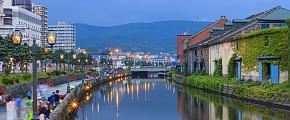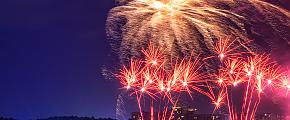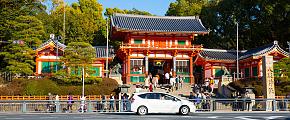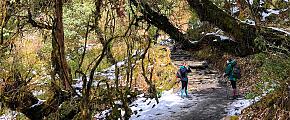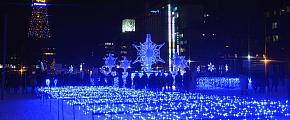Hiroshima Travel Guide
Hiroshima is one of your must-see destinations when you take a tour to Japan. If you're having trouble figuring out how to travel around Hiroshima, read this complete guide to Hiroshima. We hope our travel guide can help you have a smoother trip.
Top Sights in Hiroshima
Hiroshima Peace Memorial Park
There is no doubt that the Peace Memorial Park has the highest profile in Hiroshima. The park covers a large area of over 120000 square meters and includes the remains of the Atomic Bomb Dome in nature, the Hiroshima Peace Memorial Museum at the end of the park, and other important monuments such as the Children's Peace Monument and the Flame of Peace. The Peace Park was built to memorialize domestic and overseas victims of the atomic bombing in 1945. The Peace Museum within the park holds exhibits where you can see heart-wrenching images of a burned person, charred clothing, and devastated buildings after the intense explosion, as well as some items like toys that were spared the attack. You may meet some survivors of the bombing who are devoted to peace by hearing about their personal, never-forgotten experiences at that moment. The Peace Memorial Park allows you to get an incredible feel of the devastation an atomic bomb can cause and, above all, cherish the hard-won peace so much more.
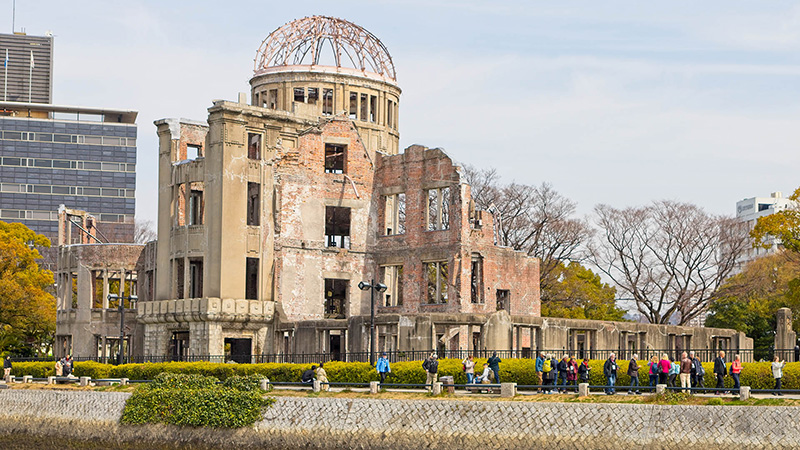 Hiroshima Peace Memorial Park
Hiroshima Peace Memorial Park
Hiroshima Castle
The image of Hiroshima Castle can be frequently seen in many travel brochures or on TV. It is widely believed that the city center of Hiroshima was born in the castle. That's why the imposing castle is an iconic symbol of Hiroshima and even the whole country. Hiroshima Castle, sometimes called Carp Castle, was originally built in 1589, but it was destroyed by a nuclear attack in 1945. The rebuilt castle features a ferroconcrete body and a wooden exterior, with its main keep standing five stories tall. One of the most attractive views of the castle is the beautiful cherry blossoms in full bloom in spring that grow along the bank of its surrounding moat. You can catch a panoramic view of the surrounding area from the top of its main keep or learn about the castle's and the city's history in the museum inside the structure.
Shukkei-en Garden
Shukkei-en Garden is a very popular destination for nature lovers to appreciate Japanese landscapes. The proximity of the garden to Hiroshima Castle makes it a popular next stop after a visit to the castle. The entire garden features a jade-like pond in the center, connected by various winding paths and delicate rainbow bridges. It is a microcosm of a range of natural formations. You can expect to find mini-valleys, mountains, and forests in the garden. Shukkei-en Garden has a long history of around 400 years and represents the highlight of traditional Japanese aesthetics. There are a lot of tea houses along the central pond, and walking the path gives you exclusive, picturesque scenery in Hiroshima.
Itsukushima Shrine
People come to Miyajima Island, also known as Itsukushima Island, mainly because of the symbolic Itsukushima Shrine, a Shinto shrine notably renowned for a large red gate, or torii, floating on the Seto Inland Sea during high tide. The shrine was included as a World Heritage Site in 1996 and marked as a national treasure by the Japanese government. Itsukushima Shrine gives you the same strikingly majestic views as the shrines in Kyoto and Kamakura do. You can take a dramatic photo of the floating building with a beautiful ocean view and the recognizable peaks of Mount Misen during high tide. Or you can walk up close to the gate for a more clear view at low tide. Besides the widely celebrated gate, the century-old complex consists of other distinguished architectures like halls, pagodas, honden, and Haiden that are also well worth a visit.
 Itsukushima Shrine
Itsukushima Shrine
Where to Stay in Hiroshima
A one-day visit can't be enough if you want to explore Hiroshima to the fullest. Staying in the city overnight is a considerable part of your journey. There are three major areas to stay in Hiroshima, allowing for primary attractions and desirable events.
Naka-ku-Hiroshima Center
The city center is known as Naka-ku, or Naka Ward, and is the busiest area of Hiroshima. If you're seeking a vibrant urban life, you should not miss it. The downtown area includes Hiroshima Peace Memorial Park, Hiroshima Peace Memorial Museum, the A-Bomb Dome, and Hiroshima Castle. The location allows you to take only a short walk to the city's top attractions from your lodging. There are also many business streets in this area, such as Hondori Shopping Arcade, Aioi-Dori Avenue, and Heiwa-Odori Street. You'll find lots of restaurants, cafes, and shops serving must try dishes like Hiroshima-style okonomiyaki, Momijimanju, and Tsukemen. Hotels here are full of variety, from budget guesthouses to high-end hotels, with prices ranging from $20 to $200 and above per night.
Hiroshima Station Area
Hiroshima Station Area has the city's transport hub, JR Hiroshima Station, which comprises a railway station and surrounds Hiroshima's central railway station, as well as different types of convenience facilities such as a shopping mall, pubs, cafes, and restaurants. You can get easy access to many famous city spots like memorial sites, Miyajima Island, and surrounding cities by tram and the sightseeing bus stopping at the station. This area is also home to Shukkeien Garden and the Hiroshima Prefectural Art Museum, which gives you an easy chance to experience local nature and artistic events during your stay. The area offers various hotel types, from top-end and mid-range with big and comfortable rooms and recreational amenities to economic ones.
Miyajima Island
Miyajima Island is both a cultural and nature-filled destination in the south-central part of Hiroshima. The island is a treasure chest of many time-honored temples and shrines, best known as Itsukushima Shrine, which is an iconic symbol. Miyajima Island is situated in Hiroshima Bay and is easily accessible by train and ferry, only 45 minutes from central Hiroshima. Staying on the island allows you to visit the only shrine built on the sea and its floating tori gate as much as you like. The area also provides activities like deer feeding and Mt. There are luxury hotels like Kurayado Iroha, medium guesthouses, and Japanese ryokans that are scarce in Hiroshima Station Area and Hiroshima Center.
The Best Time to Visit Hiroshima
Overall, with the exception of occasional typhoons between June and October, Hiroshima enjoys a moderate climate most of the year, like most cities in Japan. If you want, there is no bad time to visit Hiroshima.
Spring (March and May) has a warming temperature of 20 degrees Celsius. It brings high chances of sunshine and pleasant humidity. It is also the opening season for beautiful cherry blossoms. From late March to early April, many spots and attractions in the city are adorned in bright pink. Famous locations for viewing are the Town of Sera, Itsukushima Shrine, and Peace Memorial Park. It is a comfortable time to join in hanami parties and have a nice picnic under cherry trees.
Summer is rainy, especially from June until mid-July. You tend to experience more high humidity and unexpected showers at this time of year, but it doesn't rain every day. The city sees increasingly hot weather in July and August, with maximum temperatures of about 35 degrees Celsius. But nonetheless, summer is one of the busiest seasons in Hiroshima. These months are filled with interesting festivals and activities. There is a remembrance ceremony, a fireworks display, the Toukasan Festival, the Sunflower Festival, and a fishing festival. Kayaking, swimming, and fishing give you great fun to the fullest in the summer.
Autumn has the same sunny and pleasant days as spring. September has a mild temperature of just above 20 degrees Celsius, and temperatures begin to drop within 20 degrees Celsius in October and November. Autumn is the most desirable time to catch the changing colors in the city. You're treated to a strikingly different sight than in spring: an enchanting view of the fall foliage turning yellow, red, and orange. Besides, you can head to Hiroshima Castle to enjoy over 2000 chrysanthemum flowers in full bloom. Be mindful that many spots may get crowded due to the cool and sunny weather.
Hiroshima experiences colder weather from December to February than in other seasons of the year, with average temperatures ranging from 6 to 10 ℃. Several days in a month may see occasional rain and snow. The cold causes fewer tourists than in other seasons, so you can enjoy quite thin crowds and cheap accommodation rates. Hiroshima also offers a range of cultural events in the winter, including the New Year celebrations at Gokoku Shrine and Itsukushima Shrine and the Oyster Festival in Miyajima, the city. You can expect to try the famous local seafood cuisine cooked with plump oysters, or head for onsen and skiing.
 Hiroshima in Spring
Hiroshima in Spring
How to Get to Hiroshima
By Plane
Hiroshima has a small international airport, Hiroshima Airport (HIJ), a 50-minute bus ride from the central city. Hiroshima Airport only operates direct flights from major Japanese cities like Tokyo, Sapporo, Osaka, and Okinawa, as well as some selected Asian destinations like China, South Korea, and Thailand. If you travel from abroad, you need to transfer your flight to Tokyo or Osaka. There are many direct flights to Hiroshima within Japan. You can fly from Tokyo, Osaka, or Kyoto. It is economical to book discounted tickets and purchase an air pass before your journey. You can expect to pay as little as $90 to $120 for the tickets. The flight typically takes about 90 minutes.
By Train
A train ride is a comfortable and convenient way to get to Hiroshima. The city is well connected to major Japanese cities such as Tokyo, Osaka, Nagoya, Kyoto, and Fukuoka by the Shinkansen network. You can take direct Nozomi trains on the Shinkansen Line from Tokyo or Kyoto in four hours and 95 minutes, respectively. Shinkansen will also get you from Osaka in two hours. Or you can take the Sanyo Line to Hiroshima Station in about 25 minutes. Taking the Shinkansen Line to Hiroshima offers scenic cityscapes, mountains, and fields along the way. Like an air pass, it is advisable to purchase a JP Pass for cheaper tickets.
By Bus
Riding long-distance buses are an economical option to reach Hiroshima from various locations within Japan. Known cities such as Tokyo, Kyoto, and Osaka provide highway buses, run by travel companies like Willer Express, to Hiroshima. The bus fares vary greatly depending on travel duration and bus type, including limousine buses and budget buses. It usually costs anywhere from $30 to $100. You can also take the overnight bus from Kyoto, Kobe, and Osaka. It is always a long journey of more than 10 hours, but it can save you money.
If you're a first-time visitor, Hiroshima must be a charm-filled destination beyond what you expect. Hiroshima, with its poignant history, serves as an important site for commemoration. The memorial sites give numerous visitors a special experience with an involuntary feeling of reflecting on the war and respecting the lives of all human beings. With cordial aspirations for peace around the world, you will be touched not only by the city's history but also its busyness downtown. Hiroshima blends natural landscape with historical architecture, past pain with contemporary rebirth. The landmark city of Tokyo is definitely sight-worthy. We hope the travel guide can make your trip easy. If you are looking for more information about Hiroshima, please contact us. We organize customized itineraries for travelers. If you travel with Odynovo, you will have a nice trip that meets your requirements and interests.
Quick Question
What Our Clients Say
Explore the latest verified reviews of Odynovo's travel services on Tripadvisor, Google, Trustpilot, Product Review and more trusted platforms.
SUBSCRIBE TO WIN A FREE TOUR
Subscribe to our newsletter for a chance to win a free 7-day tour to India! And more insider travel news, exclusive offers, and inspiration will be sent straight to your inbox. Check our previous newsletters and get some sparks.

